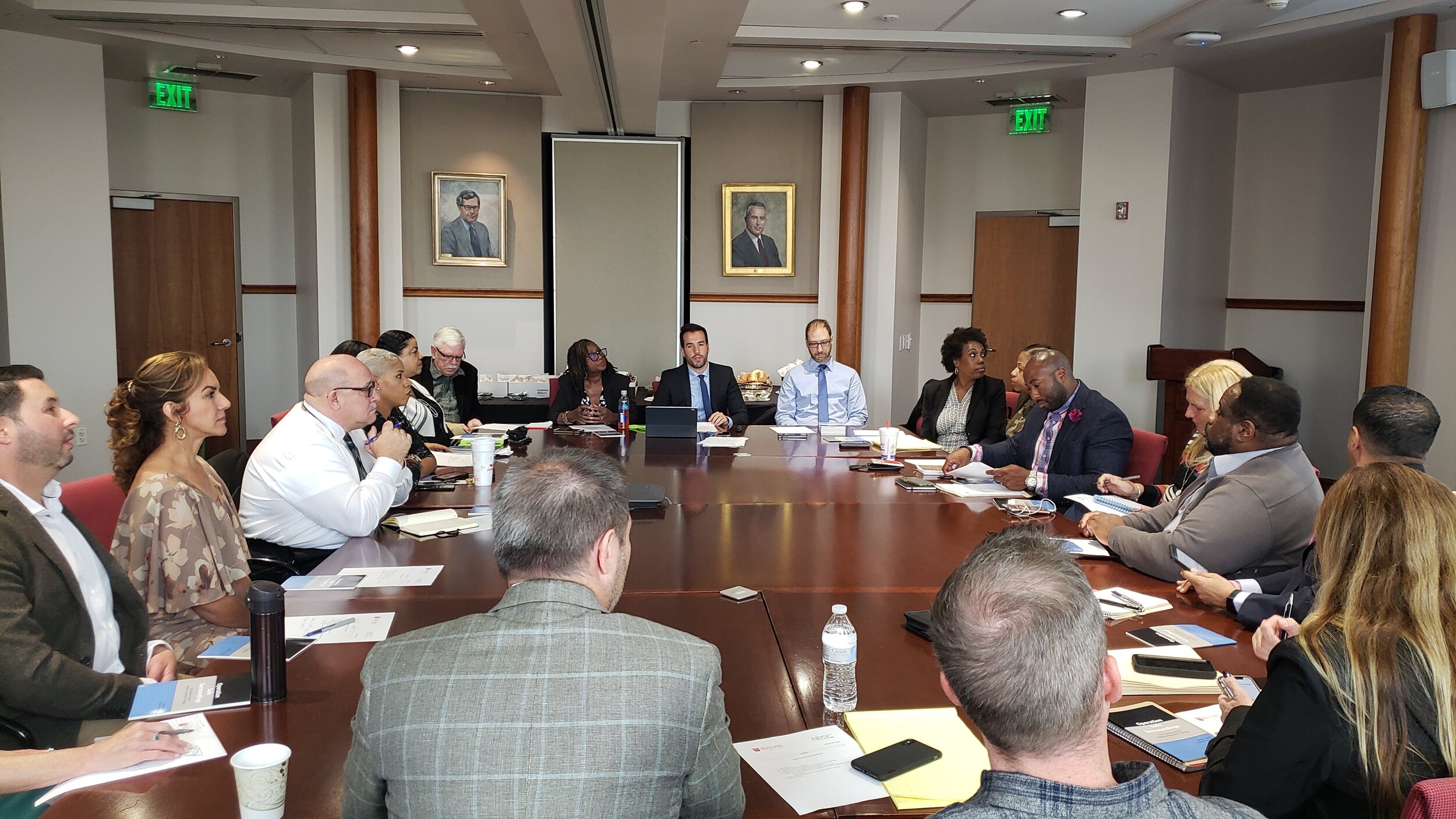NPSC seeks to (1) democratize the use of data and analytics, (2) empower community organizations to become co-producers of public safety, and (3) mobilize community resources and expertise to problem-solve Newark’s most pressing crime issues.
The NPSC was formed in 2018 as part of the Rutgers-Newark School of Criminal Justice Anchor Initiative. Through a direct partnership with the Newark Mayor’s Office, the Newark Department of Public Safety, and community stakeholders, the NPSC seeks to (1) democratize access to data and analytics, (2) empower community organizations to become co-producers of public safety, and (3) mobilize community resources and expertise to problem-solve Newark’s most pressing crime issues.
The NPSC approach focuses on reimagining public safety through a collaborative effort led by community-based organizations, local government, and police working together towards a mutually agreed “production” of community safety.
NPSC supports efforts to reduce violent crime and enhance public safety by making data analytics and research evidence accessible to local community groups and change agents.
Community groups lead the way in NPSC’s membership
The NPSC serves a diverse network of stakeholders from different constituencies and sectors of Newark, including community-based grassroots organizations and large corporations.
PROBLEM STATEMENT:
Public safety efforts need to be data-driven and evidence-based. While the City of Newark and its police department (NPD) has the technological capacity for extensive data collection and management, there needs to be an equally robust framework for collaborative problem-solving and community engagement. There is also a need to coordinate multiple resources in efficient and effective ways. Newark’s wealth of ‘big data’ requires a structured and repeatable process for its analysis and review in order to become actionable by a variety of municipal departments and their community partners. This needs to be done in a measured and transparent way.
The NPSC Process for Data-Sharing and Problem-Solving
PROBLEM SOLUTION:
The Newark Public Safety Collaborative (NPSC) offers an alternative to traditional community policing models, which rely on police-centric responses to crime problems and proposes the co-production of public safety by multiple community stakeholders as a solution. Most community policing efforts of the past share a common characteristic: the leading role of police agencies having control over both the message and the data that informs public safety priorities. These priorities, however, don’t necessarily align with community expectations. The novelty brought by the NPSC is the co-production of public safety by multiple community organizations, local government, and police working together towards a mutually agreed “production” of community safety. The result is Data-Informed Community Engagement (DICE), an innovative public safety model with data and analytics at the core of a collaborative effort in which organizations with diverse priorities and objectives can achieve results that wouldn’t be attainable had these organizations acted alone.
Data-Informed Community Engagement (DICE)
The DICE model guides the NPSC. The six principles of DICE are:
1. Convene local stakeholders, including police and law enforcement officials, to a data-informed discussion.
2. Democratize the use of data and analytics with a focus on place-based analytics.
3. Solicit and value input from community stakeholders, including law enforcement, businesses, and local government about situational crime contexts, preferred outcomes, and performance measures.
4. Make data-informed decisions following a transparent process of problem definition, information gathering, and analysis.
5. Mobilize community resources and expertise to problem-solve the most pressing crime issues.
6. Empower community organizations to become co-producers of public safety.
Data-informed community engagement (DICE) uses place-based analytics (see RTM, hot spot analysis, among other evidence-based techniques) to diagnose crime problems, form narratives, and develop place-based strategies to address pressing problems.
DICE strategies share the burden of crime prevention and public safety among multiple stakeholders who deliver a variety of resources to places that need them most.
“By democratizing access to data and analytics, community groups can fully engage in problem-solving activities effectively. Collectively, local stakeholders can pool their resources and expertise toward the common objective of producing community safety and wellness.”
Dr. Alejandro Gimenez-Santana
















